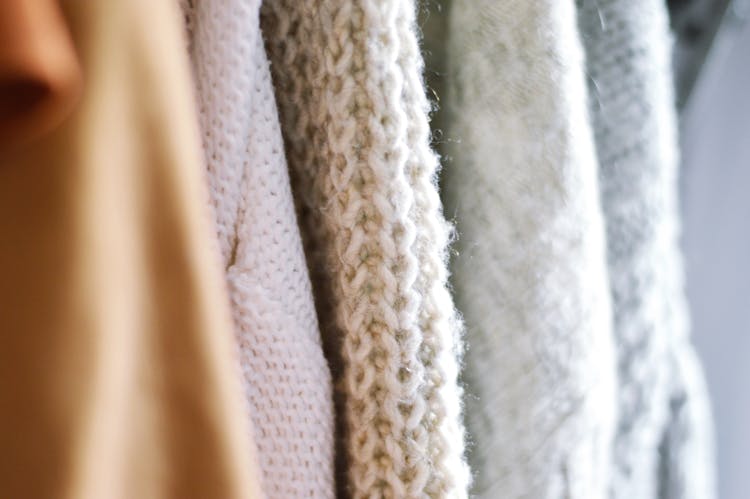All Categories
Featured
Table of Contents
- – Natural Laundry Solutions: Ditch the Chemicals...
- – The Art of Line Drying: Eco-Friendly Tips for ...
- – The Sustainable Laundry Challenge: 21 Days to ...
- – Natural Laundry Boosters: Eco-Friendly Alterna...
- – What are some simple ways to make laundry mor...
- – How can I reduce microplastic waste from laun...
🌍 TLDR Summary:
- 🌱 Wash clothes less often to save water and energy.
- 🚿 Opt for high-efficiency, eco-friendly detergents.
- 🌡️ Use cooler temperatures to conserve energy by half.
- 🌀 Air-dry clothes to significantly reduce carbon footprint.
- 🧼 Consider natural fabric softeners to keep chemicals at bay.
Sustainable laundry practices are essential for mitigating the environmental impact that laundry routines typically create. The laundry process—from washing to drying—can consume significant amounts of energy and water, making it imperative to adopt methods that prioritize eco-friendliness. By implementing a few mindful strategies, you can dramatically reduce your laundry's ecological footprint while saving money in the long run. Let’s dive into the effective methods and easy changes to help you make your laundry habits more sustainable.
Natural Laundry Solutions: Ditch the Chemicals, Embrace Eco-Friendly
One highly effective way to minimize the environmental impact of your laundry is to wash clothes less frequently. This simple shift in habit can lead to significant energy and water savings. For instance, consider washing your jeans only after wearing them for ten times instead of just two. This alone can cut your energy consumption by up to 80 percent. By being more selective about when you do laundry, you can reduce the overall frequency of your washing loads, thereby lessening the strain on water resources and the energy grid.
Another practical step is choosing high-efficiency (HE) detergents. These specially formulated products are designed to produce fewer suds and use less water, making them ideal for eco-conscious consumers. Moreover, look for the EPA's Safer Choice label, which signifies that the detergent contains safer ingredients for the environment and human health. Not only will these products clean your clothes effectively, but they also minimize harmful runoff into water systems.
The Art of Line Drying: Eco-Friendly Tips for Fresh, Sun-Dried Clothes
Choosing to air-dry clothes instead of using a dryer can also make a meaningful difference. The dryer is responsible for about 75 percent of laundry's total carbon footprint. By simply opting to hang your garments to dry, you can potentially reduce your climate impact by nearly 67 percent. Plus, sun-drying can enhance the natural fragrance of your clothes while preserving their integrity, which is often compromised in high-heat drying environments. In addition, consider using natural fabric softeners. Instances like white vinegar with added essential oils can provide softness to your laundry without exposing yourself or the environment to harsh chemicals.
A proactive approach also includes maintaining your washing machine. Regular checks for lint and blockage can keep the machine operating at peak efficiency. Furthermore, it is crucial to run full loads whenever possible, allowing you to maximize energy and water use effectively. Running multiple half loads consumes more resources; thus, full loads not only benefit the environment but also save on utility bills.
Explore handy resources for mindful decluttering.
The Sustainable Laundry Challenge: 21 Days to Greener Habits
As an additional measure, consider how your choices affect microplastic waste. Using biodegradable laundry pods or opting for refillable plastic jugs can greatly reduce the plastic you contribute to landfills. Certain brands are innovating with pods made from renewable resources, making your laundry routine easier and more environmental. It's essential to pay attention to the microplastics released during the washing of synthetic fabrics, contributing to a larger issue in our oceans.
Lastly, educating yourself about sustainable laundry practices is vital. Keep up with the latest developments in eco-friendly products and methods to ensure you’re not only doing your part but also inspiring those around you. The more you learn, the more effective you’ll become at advocating for changes—whether it’s utilizing greener products or sharing tips with friends and family.
Check out this practical guide for a clutter-free life.
Natural Laundry Boosters: Eco-Friendly Alternatives to Harsh Chemicals
To conclude, the transition to eco-friendly laundry practices doesn't need to be overwhelming. By making small, manageable changes—such as washing less, utilizing cold water, and opting for natural products—you can significantly contribute to a healthier planet. Each step creates a ripple effect, influencing others to adopt their sustainable habits. In the long run, you’ll not only enjoy the peace of mind that comes with a reduced carbon footprint but also a cleaner, fresher wardrobe.
Here are some key takeaways for making your laundry routine more sustainable:
- 🌱 Wash clothes less often.
- 🚿 Opt for eco-friendly detergents.
- 🌡️ Use cold water settings to save energy.
- 🌀 Air-dry to reduce your carbon footprint.
- 🧼 Learn and implement natural alternatives for fabric softeners.
What are some simple ways to make laundry more sustainable?
How can I reduce microplastic waste from laundry?

Natural Laundry Boosters: Eco-Friendly Alternatives to Harsh Chemicals
Table of Contents
- – Natural Laundry Solutions: Ditch the Chemicals...
- – The Art of Line Drying: Eco-Friendly Tips for ...
- – The Sustainable Laundry Challenge: 21 Days to ...
- – Natural Laundry Boosters: Eco-Friendly Alterna...
- – What are some simple ways to make laundry mor...
- – How can I reduce microplastic waste from laun...
Latest Posts
Addressing Credit Woes: DIY Repair Strategies for Unique Cases
The Ultimate Guide to Diamond Ring Cleaning
Mastering the Art of Diamond Ring Care
More
Latest Posts
Addressing Credit Woes: DIY Repair Strategies for Unique Cases
The Ultimate Guide to Diamond Ring Cleaning
Mastering the Art of Diamond Ring Care